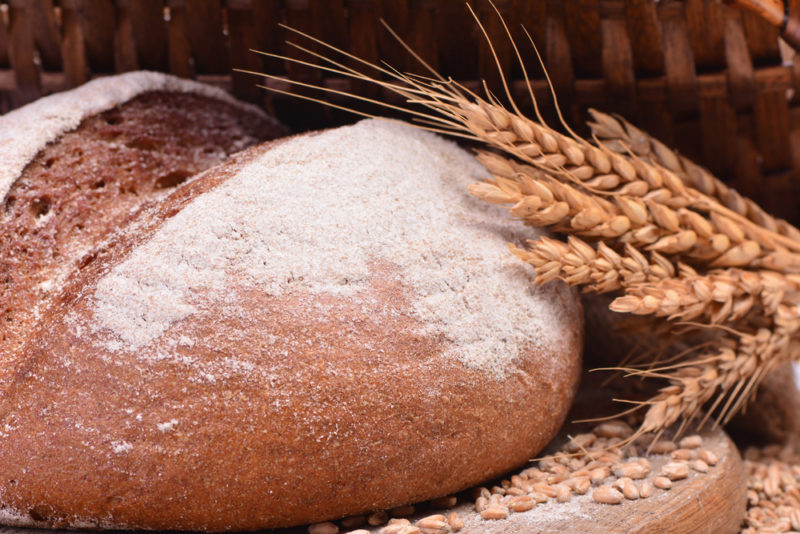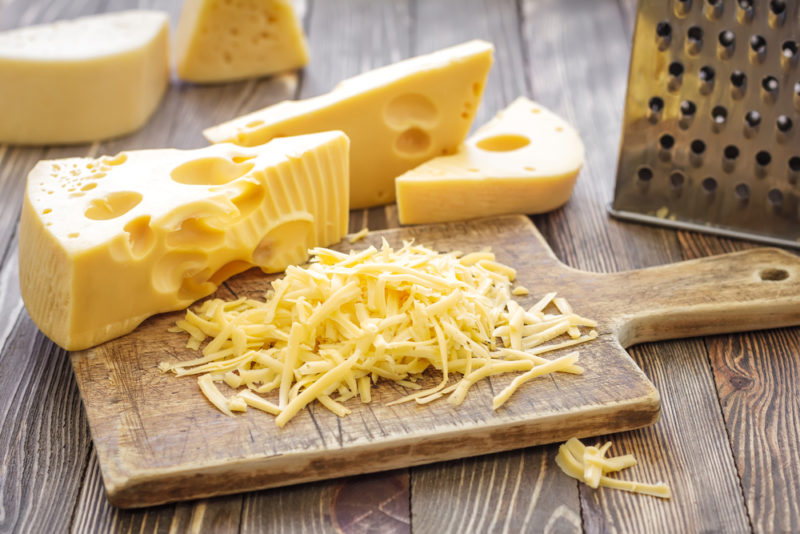Granted, you probably know better than to chow down on a green slice of “white” bread. But you may not know why moldy foods cause problems, and how prevalent they really are.
In fact, this may be the first time you’re hearing about mycotoxins — the byproducts of mold or fungus that exist in many different foods and in certain environments. Mycotoxins are produced by certain species of mold, and they come in different groups, including aflatoxin, zearalenon and ochratoxin. Since they are produced by fungi, they are associated with diseased or moldy crops. They can be present in the air or in your food.
Not only that, airborne mycotoxins from toxic mold and moldy foods can be absorbed through the eyes, skin and lungs, potentially causing some serious health problems. Hello vomiting, breathing problems, and damage to internal organs.
Many of the conventional crops that are grown today are at risk for mycotoxin contamination. While small amounts of mycotoxins in your food won’t kill you, they can cause different health problems over time, including cancer and autoimmune disorder. Mycotoxins tend to affect those with weak immune systems more often, but anyone can be at risk, depending on the amount and time of exposure.
Mycotoxin poisoning is known as mycotoxicosis. Antibiotics and other drugs have shown little effect on mycotoxicosis symptoms. The best known treatment is to stop the exposure of mycotoxins. Removing airborne mycotoxins from your home could include mold removal and thorough cleaning, while removing food-borne mycotoxins involves a change in diet.
To reduce your risk of mycotoxin poisoning, remove these 10 most commonly contaminated foods from your diet.
1. Alcohol
Beverages are made from grains that are easily contaminated. Along with the other health risks that alcohol poses, it is contaminated with mycotoxins.
Alternatives: kombucha, tea, coffee, water.
2. Wheat
Products that contain wheat are at a high risk for mycotoxin contamination — even organic and sprouted.
Alternatives: Gluten-free flours, coconut flour, quinoa, rice.
3. Corn
Fresh corn is the most likely to harbor mycotoxins. Other corn products such as chips and flour are at a lower risk for contamination, but should still be consumed with caution.
Alternatives: quinoa chips, sweet potato chips, quinoa flour, other vegetables.
4. Sugar
Yes, unfortunately, sugar cane and sugar beets grow in conditions that may lead to mold growth and contamination. What’s more, sugars also feed fungi that live in the body, causing an overgrowth that can lead to a variety of health problems.
Alternatives: raw honey, maple syrup, stevia.
5. Barley
Barley, which contains gluten, can be easily contaminated with mycotoxins. Moldy foods can include grains that we use to make many baked products.
Alternatives: almond flour, lentils, garbanzo beans, rice.
6. Peanuts
As disappointing as it may be, peanuts contain many different types of molds and mycotoxins. But you’ve likely heard specifically about aflatoxins in peanut butter.
Alternatives: Brazil nuts, walnuts, almonds.
7. Sorghum
Sorghum is popular with those who need to eat gluten free, but unfortunately, it, too, may be contaminated. Be cautious when purchasing foods that seem to be shelf-stable. These may be harboring toxic molds.
Alternatives: Almond, coconut, quinoa, rice flour.
8. Cheese

OK – so we know that cheese is literally moldy. But when it comes to moldy foods, cheese can be safe. Interestingly, mycotoxins often contaminate a variety of cheeses, with the exception of Gouda, which is made from cultures instead of fungus.
Alternatives: silken tofu, tahini spread, hummus, pesto.
9. Cottonseed and Cottonseed Oil
Read the labels! You’ll find cottonseed oil on a lot of packaged food labels, from pasta products to potato chips and other ultra-processed food. It’s highly contaminated with mycotoxins.
Alternatives: coconut oil, avocado oil, olive oil.
10. Rye
This is yet another gluten-containing grain. And like other grains, rye appears in many baked products and is also susceptible to mold contamination.
Alternatives: chickpea flour, rice flour.
Watch the video below for more information on mycotoxins and moldy foods:
Sources:
The Hearty Soul
Black Toxic Molds
World Health Organization
FAO
NCBI


